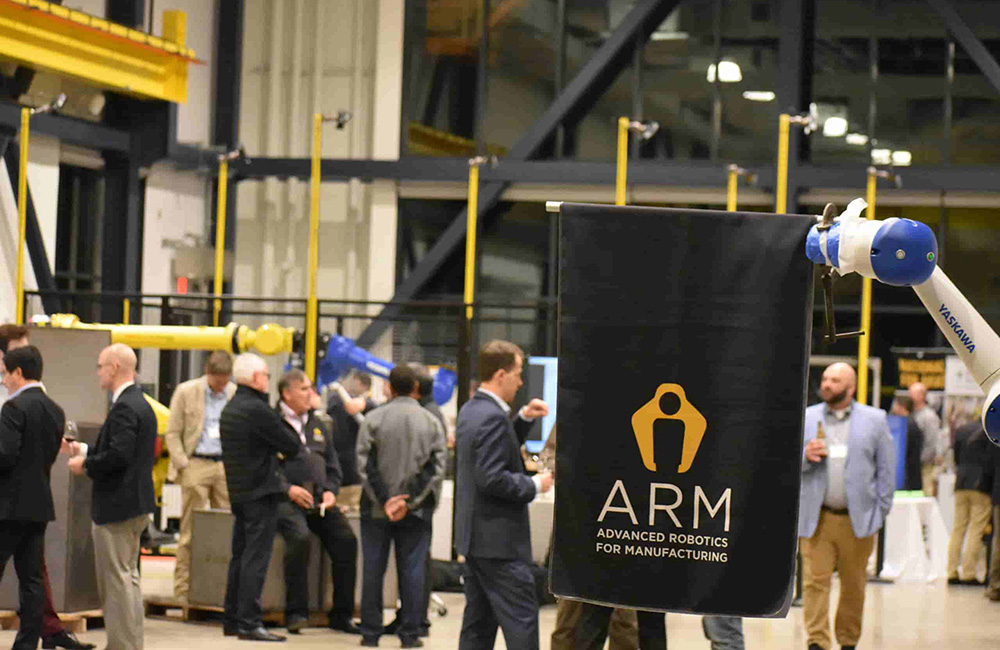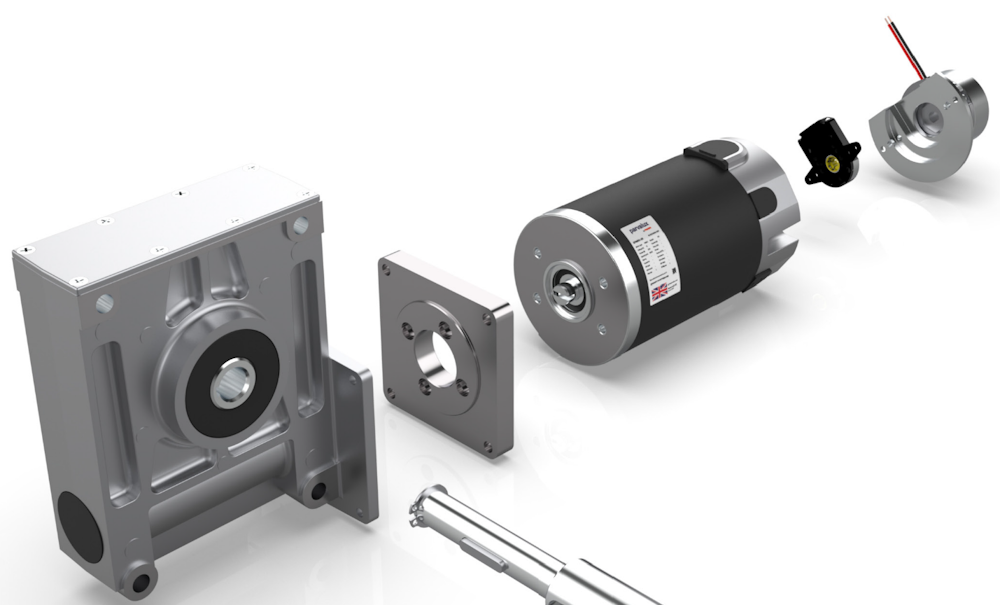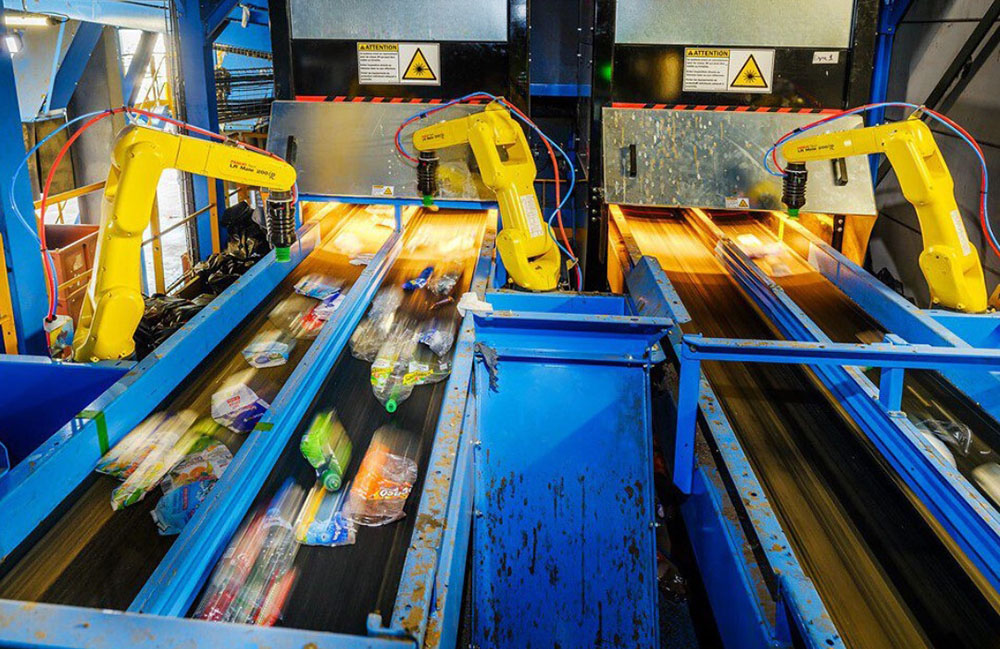The nonprofit ARM Institute said it intends to be an honest broker between robotics and manufacturing stakeholders. | Source: ARM Institute
The Advanced Robotics for Manufacturing, or ARM, Institute today selected six new technology projects for funding. These projects came from the ARM Institute’s 24-01 Technology Project Call, which centered on the following topics: multi-modal inputs for AI robotics in manufacturing, rapid re-tasking and robot agility, multi-robot and multi-human collaboration, and virtual commissioning of advanced robotic systems.
The institute plans to award around $2.9 million in project funding, for a total contribution of approximately $6.1 million across these six projects. To date, the Pittsburgh-based organization said it has catalyzed more than 100 robotics technology and workforce development projects.
“The ARM Institute congratulates these project teams on their selection,” stated Dr. Chuck Brandt, chief technology officer of the ARM Institute. “These projects epitomize the importance of enabling collaboration between diverse organizations to address areas of need in manufacturing. The ARM Institute is honored to enable collaboration between these groups and support these important projects.”
The consortium said its projects aim to bridge gaps between industry, government, and academia for innovations in robotics and artificial intelligence to strengthen U.S. competitiveness. By releasing project calls to its membership of more than 400 organizations, the ARM Institute said it connects groups that otherwise would not collaborate to advance technologies that address manufacturing challenges.
1. Automated T-shirt assembly system
Apparel manufacturing is an industry ripe for automation, making it a strategic focus for the ARM Institute. Robotics and automation could be key to re-shoring apparel manufacturing, which could create more U.S. jobs, it added.
In the past, the institute has funded several robotics projects centered on apparel manufacturing, with each building on prior outputs and lessons learned. This project will design, develop, and test a robotic system that automates six operations involved in T-shirt manufacturing to demonstrate the feasibility of automating garment sewing in a factory environment.
Henderson Sewing Machine Company Inc. is leading this project as the principal investigator. Its project team includes HanesBrands Inc., Apparel Robotics, the Southwest Research Institute (SwRI), Interface Technologies, and MassRobotics.
2. Demonstration of rapid TPC welding at scale
Lightweight carbon fiber-reinforced thermoplastic composites (TPCs) can meet the high-rate demands of the aerospace market, while also providing sustainability benefits. These features will make it an important material in the future of the market.
One challenge, but also a key enabler of high-rate TPC manufacturing is welding, the ARM Institute said. A prior project, called Rapid Welding of Thermoplastic Composite Structures, showed that robotic continuous ultrasonic welding can increase the speed of induction.
This project will build on the outputs from the prior project to scale it to production use. RTX Technology Research Center is the principal investigator, and the team includes Carnegie Mellon University (CMU), Wason Technology LLC, and Collins Aerospace.
3. Fixtureless robotic assembly and manufacturing environment (FRAME) 2.0
This project will build on the outputs from the ARM Institute-funded FRAME project. FRAME is a fixtureless high-mix/low-volume (HMLV) manufacturing cell.
The institute said it has widespread applicability to both defense and commercial manufacturing challenges. By enabling humans and robots to collaborate, the project’s goal is to increase efficiency, reduce downtime, and increase call yield.
FRAME 2.0 will address a wider range of part sizes and complex assembly scenarios and advancing the project into a functional pilot line. Lockheed Martin is the project’s principal investigator. The University of Southern California (USC), CMU, and Yaskawa Robotics make up the project team.
4. Adaptive insertion of automotive parts using multi-modal AI
In automotive, aerospace, and consumer electronics, adaptive insertion is performed by humans. This is because the task requires whoever does it to apply and adjust the force in real time to insert asymmetrical, oddly shaped objects successfully.
The ARM Institute said a key enabler for the adoption of autonomous adaptive insertion systems is a multi-modal AI that uses real-time information from sensors, combined with novel machine learning (ML) techniques. It also uses new edge-computing techniques to adaptively insert parts of varying shapes, sizes, and weights needed for assembling items within different industries.
This project seeks to integrate multi-modal AI inputs, ML algorithms, new computing techniques, and sensors. It plans to create a system to enable robots to operate flexibly in adaptive insertion applications.
The principal investigator of the project is ThoughtForge AI, and the project team is made up of Siemens and Magna International.
5. Automated finishing of castings: Parting line grinding
Led by CapSen Robotics, this project aims to automate the manual finishing process of metal casting. The ARM Institute said metal casting offers flexibility in a component’s size, shape, and material and often operates in the low-volume, high-mix manufacturing scenarios.
Castings, however, often have high-variable features/defects that need to be removed or post-processed. Finishing processes today are typically completed manually due to variability, but these manual processes can lead to errors, higher costs, and slower speeds.
This project team plans to develop a robotic finishing cell that autonomously finishes castings. The system will image the cast component, reconstruct a 3D model of the part, identify parting line flash, and create a tool path and motion plan for performing the grinding operation. It will also execute robotic grinding – all with limited human intervention and no explicit CNC programming.
The project team is made up of The Ohio State University (OSU), SwRI, and Yaskawa Robotics.
6. Agile robotic path planning for spray coating of complex geometry
First-time quality is difficult to achieve in current high tolerance, large, complex robotic coatings applications within the defense industrial base, said the ARM Institute. This can lead to excessive manual rework, re-programming, and increased product lead times, it said.
Challenges with mapping complex surface geometries to ensure surface coverage without overspray onto other surfaces make the coating and finishing of complex geometry parts difficult. This project team will seek to create autonomous robotic path-planning software for the coating and finishing of complex geometry that can use metrology data.
This project is led by Northrop Grumman Corp., and the project team includes Manufacturing Automation Systems (MAS) and OSU.

 4 months ago
93
4 months ago
93










 English (US) ·
English (US) ·